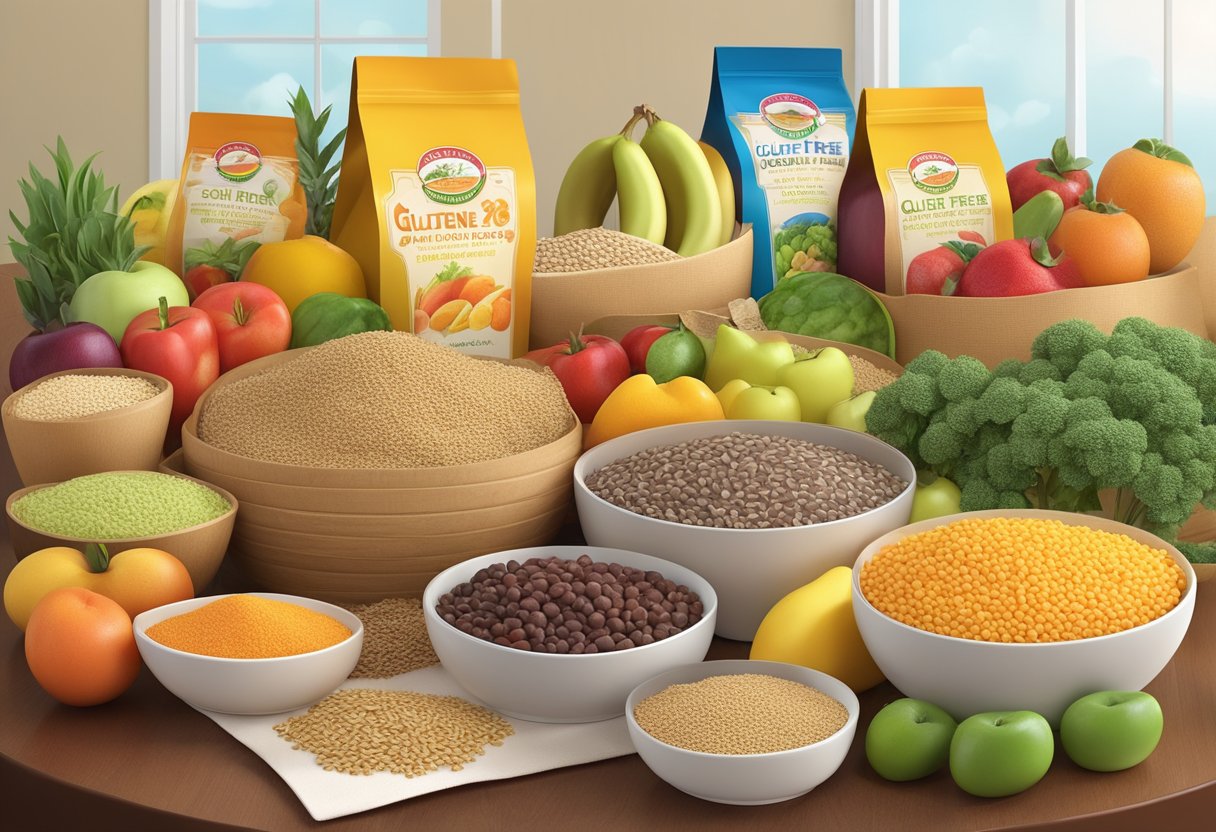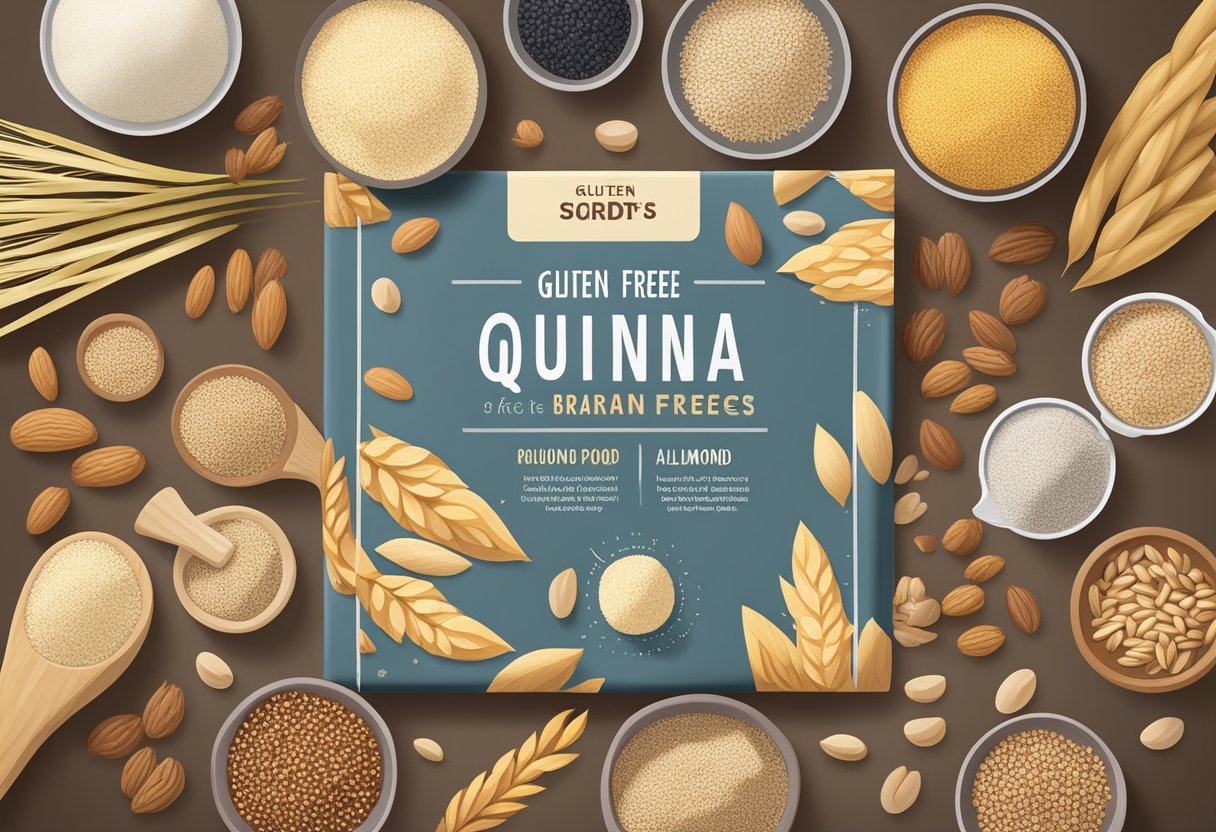In the past decade, the prevalence of gluten-free products on supermarket shelves has surged. This is, in part, a response to the growing awareness of celiac disease—a serious autoimmune condition triggered by gluten, a protein found in wheat, barley, and rye. However, the gluten-free trend has surpassed medical necessity, appealing to those who perceive these products as inherently healthier options. It is important to understand that “gluten-free” does not automatically equate to being more nutritious. In fact, gluten-free processed foods often contain alternative ingredients that may affect the overall health profile of the product.

Many consumers who switch to a gluten-free diet for health reasons may not realize that gluten-free processed foods can still be high in sugars, fats, and calories. The processing involved in creating gluten-free versions of traditionally gluten-containing products can also lead to a reduction in certain nutrients. On top of that, the psychological impact of adhering to a strict gluten-free lifestyle can be significant, affecting a person’s sense of social inclusion and emotional well-being.
Key Takeaways
- Gluten-free processed foods may not be more nutritious than their gluten-containing counterparts.
- These products can be higher in sugars and fats, potentially impacting weight management.
- Adherence to a gluten-free diet can have psychological effects beyond physical health considerations.
Table of Contents
Understanding Gluten and Celiac Disease
To make informed choices concerning gluten-free processed foods, one must first understand gluten itself and the medical conditions it affects, such as celiac disease and non-celiac gluten sensitivity.
What Is Gluten?
Gluten is a protein found in several types of grains, including wheat, barley, and rye. It’s what gives bread its chewy texture and is also used as a stabilizing agent in many processed foods. For individuals on a gluten-free Mediterranean diet, it’s crucial to note that traditional staples such as pasta and couscous typically contain gluten, whereas alternatives like quinoa and rice are safe choices.
Celiac Disease Explained
Celiac disease is an autoimmune disorder where the ingestion of gluten leads to damage in the small intestine. It affects about 1% of the population globally. When a person with celiac disease consumes gluten, their immune system responds by attacking the small intestine, potentially leading to symptoms like diarrhea, abdominal pain, and malabsorption of nutrients. A strict, lifelong gluten-free diet is the only current treatment, emphasizing naturally gluten-free Mediterranean foods like fruits, vegetables, legumes, lean meats, and certain grains.
Gluten Sensitivity Vs. Celiac Disease
Gluten sensitivity, or non-celiac gluten sensitivity, refers to a condition where individuals experience symptoms related to gluten consumption without the autoimmune response characteristic of celiac disease. Symptoms can be similar, but they are not caused by an immune reaction damaging the small intestine. It’s vital for those with gluten sensitivity to be vigilant about avoiding gluten, even when following a Mediterranean diet, opting for dishes rich in whole foods and naturally gluten-free grains.
The Rise of Gluten-Free Processed Foods
Demand for gluten-free alternatives has seen an unprecedented rise as individuals adopt gluten-free diets, either for health reasons or personal preferences. This section delves into what exactly constitutes processed gluten-free products and the trajectory of their growth in the food market.
Defining Processed Foods
Processed foods are those that have been altered in some way during preparation. Gluten-free processed foods range from bread and pastas to snacks and ready meals, specifically formulated without gluten-containing ingredients. Gluten-free implies that these products are suitable for those with celiac disease or gluten sensitivity, and they must comply with specific regulatory standards that limit the amount of gluten to prevent adverse health reactions.
History and Market Growth
The history of gluten-free products parallels the recognition of celiac disease and gluten sensitivities. Initially, options were sparse and primarily available through specialty health food stores or direct from manufacturers. However, a surge in awareness and diagnosis has fueled market growth. From the early 2000s to the present, the availability of gluten-free foods has expanded dramatically, with supermarkets and restaurants now routinely offering gluten-free options. A report cited on Mayo Clinic Connect suggests that even though there is a trend towards gluten-free diets, it is essential to consider that gluten-free processed foods can be lower in fiber and other nutrients. Meanwhile, another study mentioned on Join ZOE showcases that the number of people adopting a gluten-free diet has more than tripled in under a decade, highlighting a significant market increase.
Health Considerations of Gluten-Free Products
When considering gluten-free processed foods, it’s essential to examine their nutritional makeup and the potential health risks they pose. Individuals often turn to these products when following dietary patterns, such as a gluten-free Mediterranean diet, focusing on whole grains, fruits, vegetables, legumes, nuts, and seeds.
Nutritional Value of Gluten-Free Alternatives
Gluten-free processed foods are often made with alternative grains or starches to mimic the texture and taste of their gluten-containing counterparts. Despite their necessary role for those with celiac disease or non-celiac gluten sensitivity, these alternatives can vary widely in terms of nutrition. They may be lower in fiber, vitamins, and minerals such as iron and B vitamins, as these are abundant in whole-grain wheat products. To counteract the potential deficit, consumers should look for gluten-free products that are fortified or enriched with these nutrients.
In terms of calories and fat, gluten-free products can be similar to or even higher than traditional products. Processed gluten-free foods may also add more sugar and fat to improve taste and texture, which can lead to increased caloric intake.
Potential Health Risks
Gluten-free processed foods come with their own set of potential health risks. For instance, a lack of dietary fiber can impact digestive health. Furthermore, gluten-free products might be higher in sodium and sugar, contributing to a range of health issues if consumed excessively.
There is also concern around the presence of arsenic in rice-based gluten-free products, as rice can absorb arsenic from the environment more readily than other grains. Consuming a variety of gluten-free grains can help mitigate this risk.
People adhering to a gluten-free Mediterranean diet should aim for balance and nutrient density by including a variety of natural, unprocessed foods to provide adequate nutrition and minimize potential risks associated with processed gluten-free foods.
Gluten-Free Foods and Weight Management
The rise in popularity of gluten-free diets has brought considerable attention to their potential impact on weight management, especially within the context of a gluten-free Mediterranean diet framework.
Link Between Gluten-Free Foods and Weight Loss
Gluten-free diets initially catered to individuals with celiac disease, but they have gained traction among those aiming to lose weight. Gluten-free processed foods often substitute gluten-containing grains with ingredients like rice flour or potato starch, which can contribute to a similar, if not higher, caloric content. Studies, such as the one highlighted by Cleveland Clinic, suggest that eliminating gluten per se does not directly result in weight loss. Instead, weight loss can be attributed to overall decreases in caloric intake, often due to the elimination of many processed foods from one’s diet.
People often mistakenly associate gluten-free processed foods with being inherently healthier, but this is not always the case. A gluten-free label does not automatically equate to a lower calorie count or more nutritious food. Thus, it’s essential to scrutinize the nutritional profiles of gluten-free processed options.
Importance of Dietary Balance
A balanced diet, whether gluten-free or not, is vital in maintaining a healthy weight and achieving weight loss. According to Consumer Reports, a holistic approach to nutrition is more beneficial than simply removing gluten. Incorporating elements of the Mediterranean diet, which emphasizes fruits, vegetables, whole grains, legumes, nuts, and healthy fats such as olive oil, can support weight management and overall health.
The Mediterranean diet, known for its rich variety of nutrients and benefits in weight management and obesity prevention, can be adapted to a gluten-free lifestyle by replacing traditional whole grains with gluten-free alternatives like quinoa or buckwheat. This adaptation ensures that individuals do not miss out on the nutritional benefits of whole grains while maintaining a gluten-free diet. It is crucial for consumers to seek out gluten-free options that prioritize nutritional density over simply being devoid of gluten, to maximize health benefits.
Labeling Standards and Food Safety
The integrity of gluten-free claims on processed foods is crucial for individuals following a gluten-free Mediterranean diet. Ensuring food safety involves stringent labeling standards and awareness of cross-contamination risks.
FDA Regulations on Gluten-Free Labeling
The FDA requires processed foods labeled “gluten-free” to contain less than 20 parts per million (ppm) of gluten. This threshold is recognized by a registered dietitian as low enough to protect consumers with celiac disease. Manufacturers opting to label their products as gluten-free must adhere to specific FDA guidelines, which include not using any type of wheat, rye, barley, or crossbreeds of these grains, unless the grains are processed to remove gluten to below the 20 ppm threshold.
Cross-Contamination Concerns
Cross-contamination can occur at various stages of food production, from the fields where ingredients are grown, to the facilities where products are processed. In the context of a gluten-free Mediterranean diet, it’s paramount that the risk of gluten exposure through cross-contamination is minimized. Foods such as grains, legumes, and seeds — staples in a Mediterranean diet — must be handled with care to ensure they maintain their gluten-free integrity. Processes must be in place to clean equipment and separate gluten-containing foods from gluten-free foods throughout processing and packaging to meet the FDA’s gluten-free labeling requirements.
Incorporating Gluten-Free Foods into Your Diet

Adapting to a gluten-free lifestyle involves understanding safe food choices and finding creative ways to prepare meals. It’s crucial for individuals to recognize the importance of whole grains, fresh produce, and lean proteins to maintain a healthy, balanced diet.
Starting a Gluten-Free Diet
When one starts a gluten-free diet, it is essential to identify and eliminate all sources of gluten. This protein, which must be avoided by individuals with celiac disease or gluten sensitivity, is commonly found in wheat, barley, and rye. Buckwheat, despite its name, is a safe alternative as it does not contain gluten. Quinoa, rice, corn, amaranth, millet, and teff are also naturally gluten-free grains that can be enjoyed. Incorporating a variety of these grains ensures a broad spectrum of nutrients.
For those aiming for a Mediterranean twist, one should focus on incorporating more beans, nuts, and seeds, along with an abundance of fruits and vegetables. Lean proteins such as fish, poultry, and certain dairy products complement the dietary needs while aligning with the Mediterranean approach. Consulting a registered dietitian can offer personalized guidance to ensure nutritional adequacy.
Gluten-Free Cooking and Baking
Cooking and baking gluten-free can initially seem daunting, yet with the Mediterranean diet as a guide, an array of flavorful dishes awaits. Key staples in the kitchen are nutrient-rich, gluten-free grains like quinoa and rice. Nuts and seeds can be used for making homemade gluten-free flour or as additions to dishes for a nutrient boost.
One could explore the variety of Mediterranean flavors through the use of fresh herbs, olive oil, and citrus in their recipes, which naturally contain no gluten. Beans and legumes offer a hearty, protein-rich option for meals. Exploring the diverse world of gluten-free grains can also lead to discovering less common ones like teff, which can be used in making Ethiopian injera—a Mediterranean-friendly, gluten-free flatbread.
Eating Gluten-Free on a Budget
Following a gluten-free diet, especially one that is Mediterranean-focused, does not have to be expensive. Prioritizing whole foods over pre-packaged gluten-free products can lead to significant savings while also being healthier. Purchasing grains such as buckwheat, quinoa, and rice in bulk can reduce costs, as can buying beans, lentils, and other legumes to incorporate as primary protein sources.
For fresh produce, one can opt for seasonal fruits and vegetables, which are more affordable and align with Mediterranean diet principles. Additionally, buying nuts and seeds in bulk is economical, and these can be sprinkled over salads or included in homemade snacks. Fish can be sourced from local markets to ensure freshness and better prices, and preserving leftovers, meal planning, and cooking at home further aids in managing a tight budget on a gluten-free diet.
Gluten-Free Whole Grains and Alternatives

For individuals requiring a gluten-free diet, the discovery of gluten-free whole grains and their alternatives is pivotal. They offer varied nutritional benefits, particularly when part of a balanced Mediterranean diet.
Identifying Gluten-Free Grains
When selecting gluten-free grains, one must look for unprocessed options such as quinoa, buckwheat, brown rice, amaranth, millet, and teff. These are inherently gluten-free and compatible with the Mediterranean diet. Oats are also gluten-free but can be contaminated with gluten unless processed in a dedicated facility, making it essential to choose those that are certified gluten-free, especially for individuals with non-celiac gluten sensitivity or celiac disease.
- Quinoa: a versatile grain that can be used like rice or pasta
- Buckwheat: despite the name, a gluten-free option suitable for porridge or pancakes
- Rice: a staple grain; brown rice provides more fiber than white rice
- Amaranth: an ancient grain known for its high protein content
- Millet: easily digestible and useful in a variety of dishes
- Teff: rich in iron and calcium, often used to make injera, an Ethiopian flatbread
Benefits of Whole and Ancient Grains
Whole grains, including those which are gluten-free, are a cornerstone of the Mediterranean diet due to their high content of fiber, vitamins, and minerals. They contribute to heart health by lowering cholesterol and support blood sugar regulation.
- Fiber: Promotes digestive health and aids in feeling full, aiding in weight management.
- Vitamins and Minerals: Essential for overall health maintenance and prevention of deficiencies.
- Antioxidants: Found in grains like quinoa and millet, these compounds combat oxidative stress.
Including a variety of these grains in the diet ensures not only adherence to gluten-free requirements but also a rich intake of essential nutrients.
The Psychological Impact of a Gluten-Free Lifestyle

Adopting a gluten-free lifestyle can lead to various psychological effects due to the social implications and intrinsic benefits of the diet, particularly when considering a Mediterranean approach, which emphasizes natural gluten-free foods such as fruits, vegetables, legumes, nuts, and seeds, along with fish and poultry.
Social Challenges and Dining Out
For individuals on a gluten-free diet, social events and dining out can become sources of anxiety and stress. Concerns about cross-contact with gluten-containing foods, coupled with the need to ask detailed questions about menu items, can lead to discomfort. The fear of being perceived as ‘difficult’ or participating in a diet trend can diminish one’s emotional well-being and discourage social interactions. Celiac disease sufferers and those with gluten sensitivity must navigate these scenarios rigorously to maintain their health, often feeling that their lifestyle limitations are misunderstood.
The Psychological Benefits
Conversely, sticking to a gluten-free lifestyle, especially one that aligns with a Mediterranean diet’s principles, can offer psychological benefits. Emphasizing natural, unprocessed foods improves not only physical health but also mental clarity and emotional balance. The sense of relief in avoiding gluten-induced health issues and the empowerment from taking control of one’s diet can greatly enhance a person’s emotional well-being. This diet can be a fulfilling lifestyle for those who are well-informed and can find pleasure in the variety and flavors of Mediterranean gluten-free foods.
Alternative Diets and Gluten-Free Living
In the pursuit of health and dietary balance, many individuals seek out gluten-free options within popular diet frameworks. Analyzing the intersection between gluten-free living and alternative diets like Paleo, Ketogenic, and the Autoimmune Protocol can illuminate the nuances of managing health conditions such as autoimmune disorders and heart disease, as well as reducing inflammation.
Paleo and Gluten-Free
The Paleo diet encourages the consumption of foods presumed to have been available to humans during the Paleolithic era. It naturally avoids grains, making it inherently gluten-free. The diet focuses on vegetables, fruits, meats, and seafood, which aligns with gluten-free recommendations—especially beneficial for individuals with gluten sensitivities or celiac disease.
Prohibited Foods on Paleo Diet:
- Grains (including wheat, rye, barley)
- Processed foods
- Dairy products
- Refined sugar
- Legumes
Ketogenic Diet and Gluten Restrictions
The Ketogenic, or “Keto,” diet requires a significant reduction in carbohydrates while increasing fat intake. Since gluten is found in many carb-rich foods, those adhering to a Keto diet may find themselves limiting gluten as well. While not specifically gluten-free, a Keto diet that focuses on whole foods rather than processed alternatives can support gluten-free living and may contribute to improved heart health by its emphasis on healthier fats.
Common Gluten-Free Keto Staples:
- Leafy greens
- High-fat dairy
- Nuts and seeds
- Meat and fish
Autoimmune Protocol (AIP) Diet
The AIP diet aims to reduce inflammation, heal the gut, and alleviate symptoms of autoimmune conditions by eliminating potential dietary triggers. Similar to Paleo, AIP restricts grains and is therefore gluten-free. The diet extends to exclude nightshades, nuts, seeds, and eggs, which may contribute to inflammation in some, supporting the management of autoimmune conditions and potentially reducing the risk of heart disease.
Key Components of AIP Diet:
- Meat and fish (hormone and antibiotic-free)
- Vegetables (excluding nightshades)
- Sweet potatoes
- Fermented foods
- Bone broth
Frequently Asked Questions
When considering a gluten-free Mediterranean diet, it’s important to address common queries associated with the consumption and processing of gluten-free products. This will include their health effects, processing differences, and misconceptions about their benefits.
What are the potential health effects of eating gluten-free processed foods?
Gluten-free processed foods often mimic their gluten-containing counterparts by substituting alternative flours and starches, which can result in varying nutritional profiles. Consumers should be aware that while some gluten-free products may be healthier, others can be high in sugars and fats to improve taste and texture.
How does gluten-free processing differ from traditional food processing?
The processing of gluten-free foods requires stringent avoidance of gluten contamination and often the use of gluten-free grains and binders to replace the elasticity and consistency that gluten imparts to dough. These processes are critical to prevent cross-contamination and maintain the integrity of gluten-free labeling.
Can a gluten-free diet be unhealthy if you are not suffering from celiac disease?
Adopting a gluten-free diet without medical necessity can lead to nutritional deficiencies if not properly managed. Without whole grains like wheat, rye, and barley, individuals might miss out on essential nutrients such as fiber, iron, and B vitamins.
What should consumers look for in healthy gluten-free food options?
Consumers should seek out gluten-free foods that are high in fiber, low in sugar and sodium, and made with nutrient-dense ingredients such as nuts, seeds, and whole gluten-free grains to ensure a balanced diet.
What are the misconceptions regarding the health benefits of a gluten-free diet?
There is a common misconception that gluten-free automatically means healthier; however, this is not always the case. Many gluten-free products may still be heavily processed and contain high amounts of sugars and fats to compensate for changes in flavor and texture.
How might a gluten-free diet impact gut health in individuals without gluten sensitivity?
For individuals without gluten sensitivity or celiac disease, a gluten-free diet may modify gut flora, potentially impacting digestion and immune function. Including a variety of whole foods, like those found in a Mediterranean diet, can help maintain a healthy gut microbiome.



